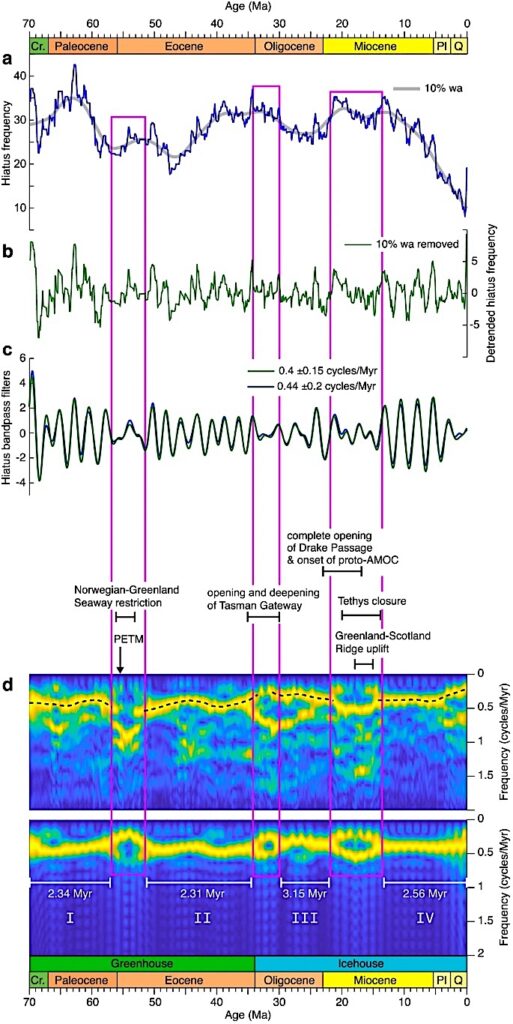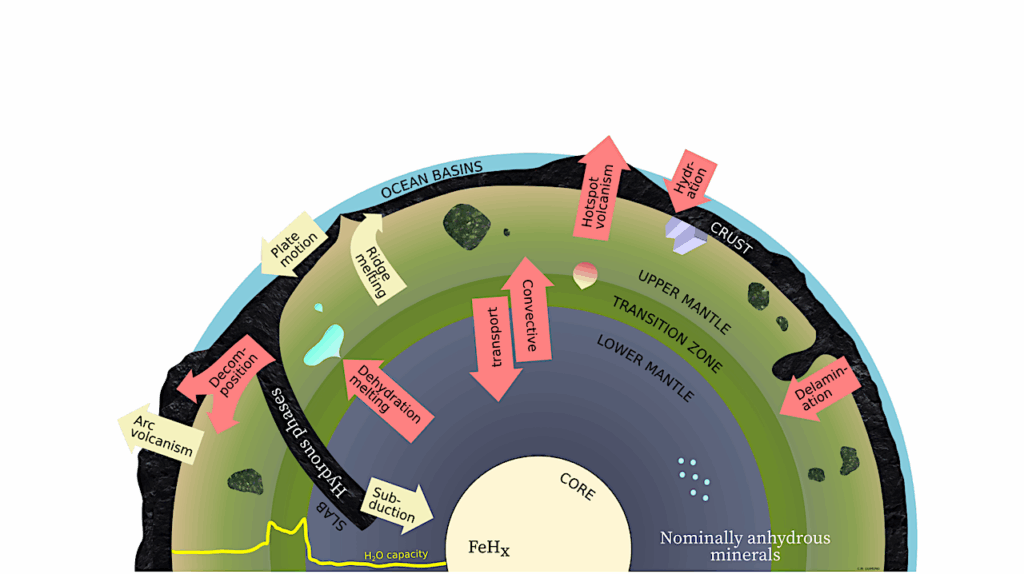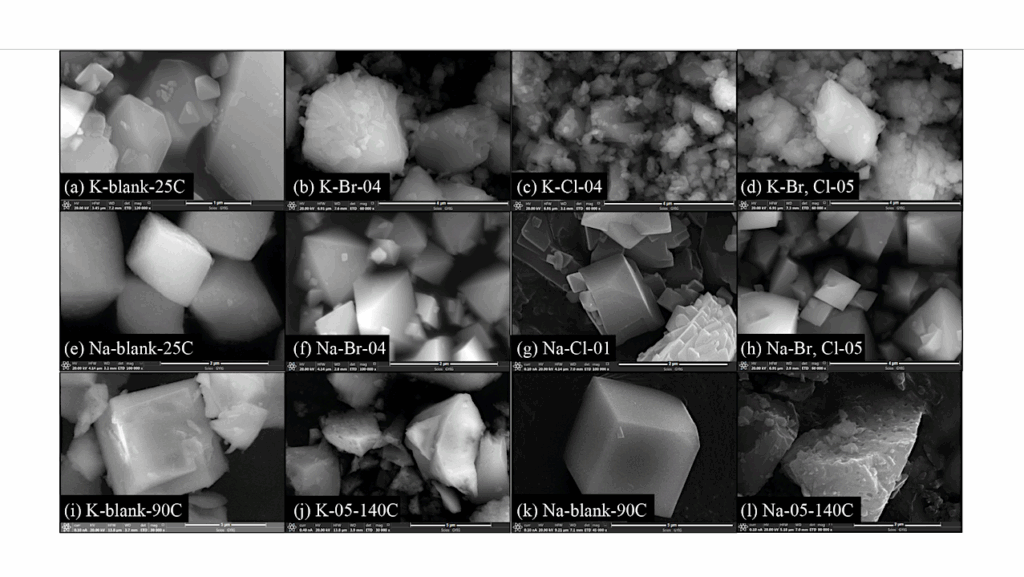How Earth’s Interactions With Mars Drive Earth’s Deep-sea Circulation

Scientists from the Universities of Sydney and Sorbonne University have used the geological record of the deep sea to discover a connection between the orbits of Earth and Mars, past global warming patterns and the speeding up of deep ocean circulation.
They discovered a surprising 2.4-million-year cycle where deep currents wax and wane which, in turn, is linked to periods of increased solar energy and a warmer climate.
The study, published in Nature Communications, tackles the questions of how geological-timescale climate change affects ocean circulation and how this could help scientists to model future climates outcomes. The researchers looked to find if ocean-bottom currents become more vigorous or more sluggish in a warmer climate.
These cycles are not linked to the current rapid global warming caused by human greenhouse gas emissions.
Lead author ARC Future Fellow Dr Adriana Dutkiewicz from the University of Sydney EarthByte Group in the School of Geosciences and co-authors used more than half a century of scientific drilling data from hundreds of sites worldwide to understand the vigour of deep-sea currents through time.
In a collaboration with Professor Dietmar Müller (University of Sydney) and Associate Professor Slah Boulila (Sorbonne), Dr Dutkiewicz used the deep-sea sediment record to check for links between sedimentary shifts and changes in the Earth’s orbit.
They found that the vigour of deep-sea currents shifts in 2.4-million-year cycles.
These cycles are called “astronomical grand cycles”, predicted to occur due to the interactions of Earth and Mars orbits. However, evidence for this is rarely detected in the geological record.
Dr Dutkiewicz said: “We were surprised to find these 2.4-million-year cycles in our deep-sea sedimentary data. There is only one way to explain them: they are linked to cycles in the interactions of Mars and Earth orbiting the Sun.”
Co-author Professor Müller said: “The gravity fields of the planets in the solar system interfere with each other and this interaction, called a resonance, changes planetary eccentricity, a measure of how close to circular their orbits are.”
For the Earth it means periods of higher incoming solar radiation and warmer climate in cycles of 2.4 million years. The researchers found that the warmer cycles correlate with an increased occurrence of breaks in the deep-sea record, related to more vigorous deep ocean circulation.
The study has identified that deep eddies were an important component of earlier warming seas. It is possible these could partly mitigate ocean stagnation some have predicted could follow a faltering AMOC (Atlantic meridional overturning circulation) that drives the Gulf Stream and maintains temperate climates in Europe.
Professor Müller said: “We know there are at least two separate mechanisms that contribute to the vigour of deep-water mixing in the oceans. AMOC is one of them, but deep ocean eddies seem to play an important role in warm climates for keeping the ocean ventilated.
“Of course, this would not have the same effect as AMOC in terms of transporting water masses from low to high latitudes and vice-versa.”
These eddies are like giant whirlpools and often reach the abyssal seafloor, resulting in seafloor erosion and large sediment accumulations called contourites, akin to snowdrifts.
Dr Dutkiewicz said: “Our deep-sea data spanning 65 million years suggest that warmer oceans have more vigorous deep circulation. This will potentially keep the ocean from becoming stagnant even if Atlantic Meridional Overturning Circulation slows or stops altogether.”
How the interplay between different processes driving deep-ocean dynamics and ocean life may play out in the future is still not well known, but the authors hope that their new results will help with building better climate models.

Magenta boxes indicate bifurcation intervals. a Raw hiatus-frequency data from Dutkiewicz and Müller19 sampled at 100 kyr intervals (blue), along with the smoothed data based on a 10% weighted average (wa) of the series (gray) for detrending. b Detrended hiatus-frequency data with removal of the trend shown in (a). c Bandpass filters of the 2.4 Myr eccentricity cycle. Note that cycle amplitudes are significantly reduced during bifurcation intervals. d Evolutive Fast Fourier Transform (FFT) amplitude spectrograms of the hiatus data. The upper panel shows a spectrogram of a larger frequency band excluding lower frequencies (<0.25 cycles/Myr), retaining higher frequencies up to 1.8 cycles/Myr (window = 6 Myr, step = 0.1 Myr). The lower panel shows a spectrogram of 0.4 ± 0.15 cycles/Myr bandpass filtered hiatus data (window = 6 Myr, step = 0.1 Myr), highlighting the frequencies of interest for the hiatus analysis. White bars labeled I–IV indicate intervals of stable unimodal signal dominated by hiatus cycles ranging from 2.31 Myr to 3.15 Myr over the last 70 Myr (see Fig. 3), separated by bifurcations. Changes in ocean gateways from Hovikoski et al.45, Eagles and Jokat50, Straume et al.49 and Bialik et al.51. PETM—Paleocene-Eocene Thermal Maximum, AMOC—Atlantic Meridional Overturning Circulation, Cr—Cretaceous, Pl—Pliocene, Q—Quaternary.
Deep-sea hiatus record reveals orbital pacing by 2.4 Myr eccentricity grand cycles, Nature Communications (open access)
Astrobiology








